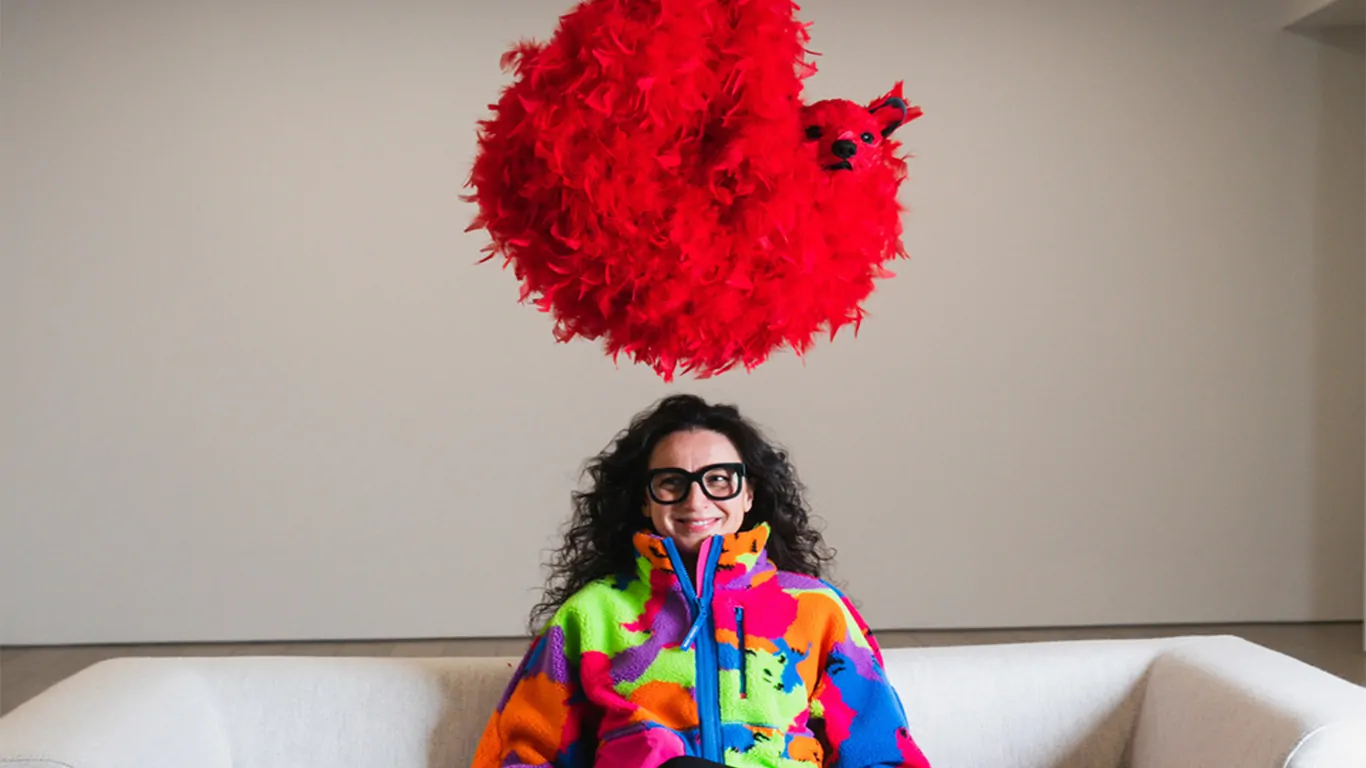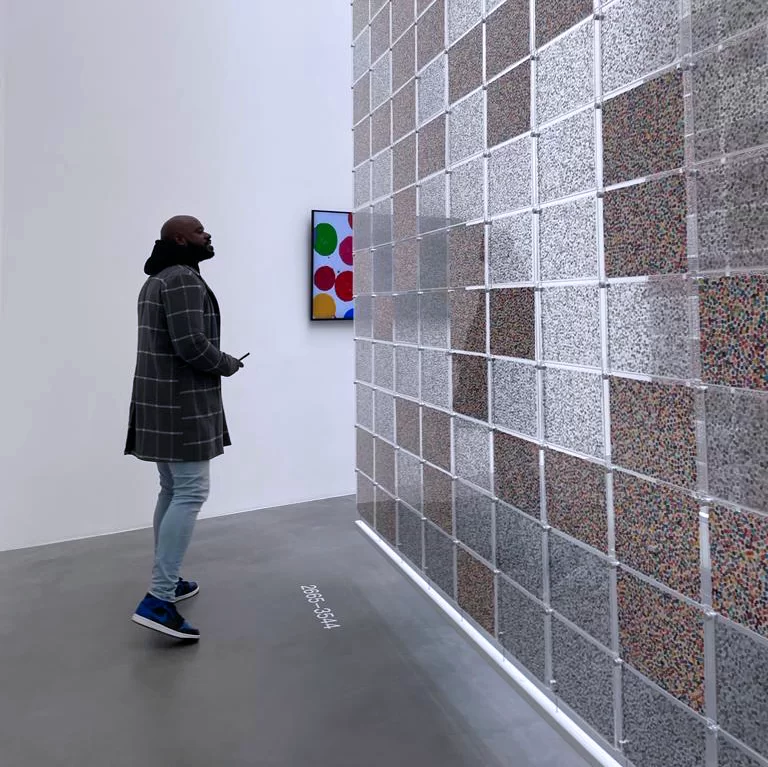Paola Pivi’s art begins where logic stops, a place of feathered Polar bears, upside-down planes, and wild imagination, where joy and absurdity meet.
Few artworks have captured the public imagination quite like Italian artist Paola Pivi’s feathered polar bears. First created in 2008, the sculptures reimagine the Arctic predator as a creature of colour and calm. They’re impossible to miss. When you see them in a gallery, the bears look like they’ve wandered in from another season: Arctic animals dressed for Carnival.
They don’t roar or move, yet the room seems to pulse around them. In their stillness lies everything Pivi asks of her audience: to imagine the familiar remade, to see play as a serious proposition.
For Pivi, who was living in Alaska when she conceived the first bear, the work began not as a statement on climate change but as an act of reverence. Surrounded by real bears, she felt herself a visitor in their world and created sculptures that came from respect, she explains, as she could not bear to work with death, so she made life instead.
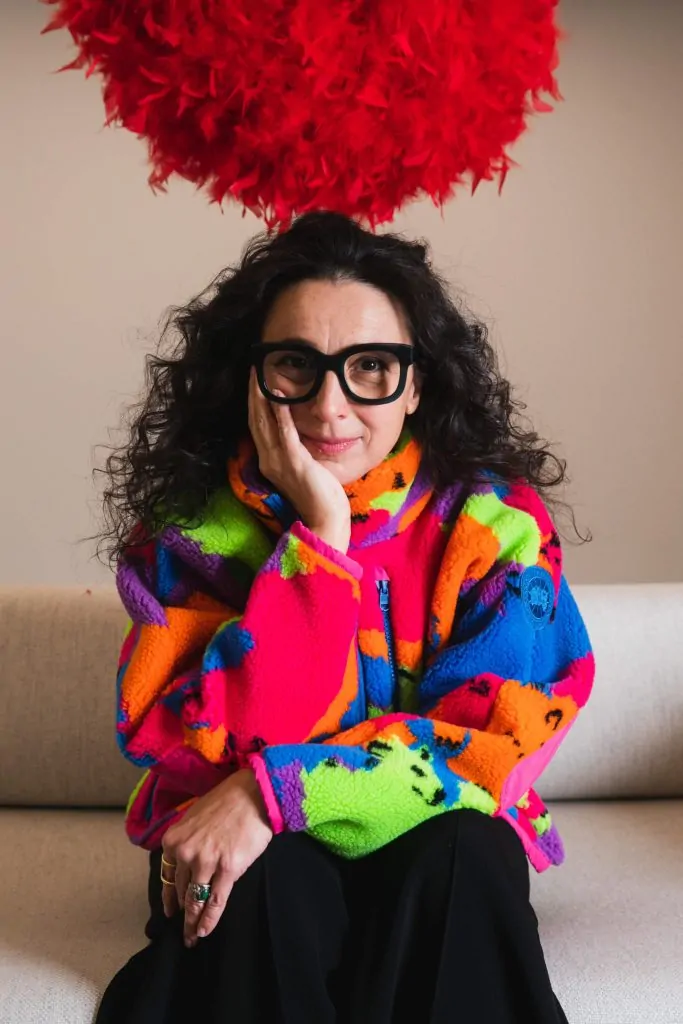
When I made those bears, the first one was made in 2008. The global warming problem was still on the fringes; it was not part of our daily conversation.
Paola Pivi
Over time, those bright bears began to speak a new language, symbolising much more: the fragility of ecosystems, the absurdity of human control, and the strange coexistence of beauty and extinction. Pivi accepts this evolution with characteristic openness, suggesting that the sculptures have absorbed meanings she never imposed. What began as a “hymn to life,” she has said, now carries the planet’s message — one of warning, wonder, and survival.
For nearly thirty years, the Italian-born artist has been known for blurring reality and imagination with gleeful precision. Zebras appear on snow-covered peaks, planes turn upside down mid-air, and animals, often impossibly reimagined, take on the burden and brilliance of human emotion. Pivi’s art has always been both joyful and unsettling, inviting laughter even as it hints at unease.
Born in Milan in 1971, she once studied chemical engineering before exchanging equations for experiment. That scientific clarity still pulses through her practice, where control meets chaos and beauty teeters on absurdity. Pivi’s reputation spans installation, photography, and performance, aiming not to decorate the world but to rewire perception. As she has said, ambition in art means moving toward the edge, where a work might either soar or fail, risking that fall every time.
Pivi doesn’t do subtle. She fills spaces until they hum, floods them with colour, and populates them with animals that shouldn’t exist.
This November, Pivi opens her most expansive exhibition to date at the Art Gallery of Western Australia (AGWA), titled I don’t like it, I love it. Few phrases could describe Pivi’s work better. This new exhibition, now taking over AGWA, turns spectacle into philosophy, a reminder that play can be a form of protest.
For anyone walking into Pivi’s exhibition, something strange happens: you smile before you understand why. Pivi doesn’t demand that you analyse so much as participate — a willingness to be caught between laughter and thought. From Milan to Alaska to Hawai‘i, Pivi has made a life out of movement. Each place has left its mark: the stillness of snow, the saturation of tropical light, the hum of remoteness. In Pivi’s world, impossibility behaves like reason. In her hands, even the most impossible image feels oddly plausible, and this new exhibition gathers those sensations into a single, kaleidoscopic conversation.
Paola Pivi – I don’t like it, I love it opens on the 8th of November, 2025 until the 26th of April, 2026 at The Art Gallery of Western Australia
“I Don’t Like It, I Love It” is framed as one of the most ambitious exhibitions of your career. How did you calibrate ambition for this project, and what risks, creative or otherwise, did you decide to take at AGWA that you might not have elsewhere?
Paola Pivi: So basically, yes, it’s trying to be the most ambitious exhibition of my career, but not because my career is important, or not in relation to my career, but because Robert, the curator, Robert Cook, and Colin, the director, and I immediately thought that we should do the most important exhibition we could do, you know, just because this is what every exhibition should aim for.
And so, we put together all our resources to try to achieve an advancement in my art and in the language of art, in the discourse of art. Therefore, that’s where it comes from. How did we calibrate ambition to the maximum we could risk? Well, every time we make a new artwork, it should be a risk, because that’s where we need to go, on that edge where it might be the best artwork, or it might be, you know, a failed artwork. So we have to go there. There are risks involved, creatively and otherwise.
There are tonnes of risks that we can take in expression today, but that expression is kind of limited. You’re totally right about that. There will be some wall paintings, though we have not yet decided which sentences will appear in them. So I still don’t have the full show in my mind. My artistic career has been punctuated by certain very large shows, with several large installations that have been extremely strong, and people have reacted with extreme attraction to them. We are going along those lines and trying to make a big show with a lot of large works that bounce off each other.
We are going in that direction rather than, for example, a show with just one piece. There will be two entirely new bodies of work for me. And that’s a lot. Today, we can take risks also in what we express in society, right? I am planning to make a mural that says international law. And as of today, these words are suddenly charged with meaning that was not so a year ago.
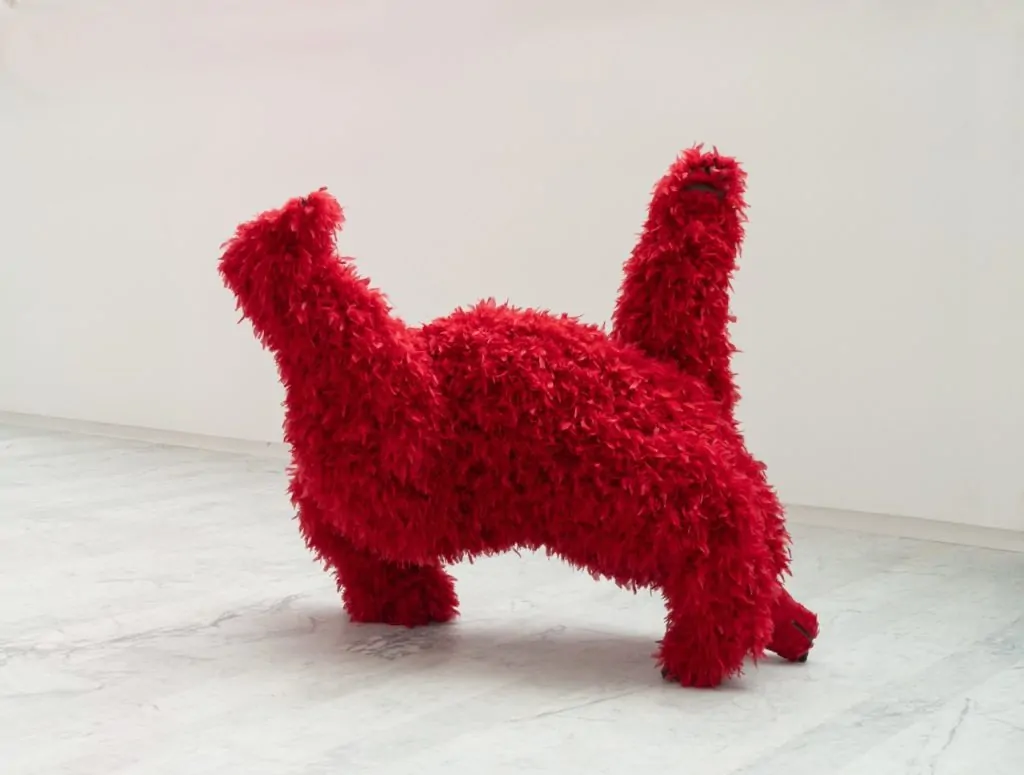
Exhibition view, ‘It’s not my job, it’s your job’ 2023, [mac] musée d’art contemporain de Marseille
Urethane foam, plastic, feathers
variable dimensions
Courtesy the Artist and Perrotin
© Paola Pivi
Photo: Hugo Glendinning
This show includes commissions designed specifically for AGWA’s architectural spaces. How do you negotiate with a building, its geometry, atmosphere, and scale, when conceiving site-specific work?
Paola Pivi: Well, this one is easy. We created the show without me seeing the space, so it was done in a sort of abstract way, but they knew the space. Then, once it was built in our heads, I went there, and we tweaked it to make it basically the best show contained within that quite amazing architecture. So it’s not a reaction to the space, but it takes the space into great consideration.
Your feathered polar bears are beloved worldwide, yet they carry an implicit warning about fragility and extinction. How do you balance their immediate charm with the undercurrent of loss they evoke?
Paola Pivi: Well, an artwork does not, you know, have space for infinite communication inside itself. When I made those bears, the first one was made in 2008. The global warming problem was still on the fringes; it was not part of our daily conversation.
It wasn’t. Few of us had felt its effects. So I did not make them for global warming at all. I made them as a hymn to life, as an admiration of the spirit of the bear. I had just moved into bear land in Alaska, but I made them with feathers instead of with the carcass of a bear, exactly because I could not bring myself to look for a dead bear.
Still less would I ever want to cause the death of a bear. So the root of the creation of that sculpture was imbued with respect for this creature and for life on the planet. Therefore, when a few years later my bears suddenly came to represent this very important message, the planet complaining about our atrocities, it was extremely welcome to me. That’s how I think this happened: the message of the planet found them, and they became vehicles for that message. And I couldn’t be any happier.
Usually, when I make one body of work, I might do one iteration of it or a few. But rarely does it happen that a series of my artworks is so in demand and has this energy of wanting always to be more and more, elsewhere, with different poses and different colours. The energies come both from the art itself manifesting and from people’s reaction to it, this extreme attraction. So maybe there is a need for this message to be told by life, by the planet, and for people to want to see it manifested to have something to look at.
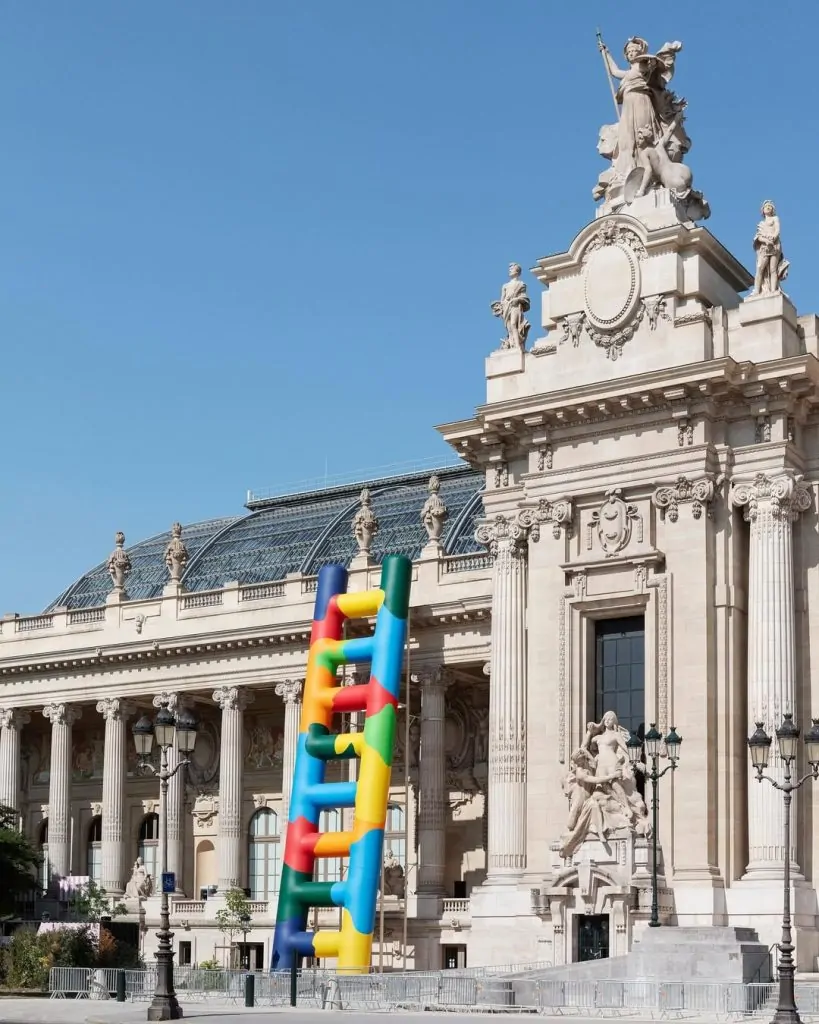
Courtesy of the artist
Some critics have described your bears as “joyful Trojan horses” for environmental consciousness. Does that reading resonate with you, or do you resist that kind of didactic framing?
Paola Pivi: Absolutely, yes, you’re right, already answered. I thought it meant something more subtle, because sometimes, you know, it could be a kind of washing of the problem with these joyful sculptures. But since I did not intentionally do that, and since they are never intentionally positioned anywhere for that purpose, it’s really just the people who want to engage with that thought when they look at my art.
So I think it’s not washing; it’s just another way of looking at it. I would resist that kind of didactic framing if that were the only meaning of it. I would never say, “Oh, this is what art means.” Art means whatever the person wants, or doesn’t want, it to mean. It must be open. So I will never say, “This is what my bears are for.” But if somebody sees that in them, great.
The inflatable comic cell, developed with Lincoln Peirce, feels both playful and deeply personal given your shift from chemical engineering to art. What does this collaboration reveal about your relationship with narrative, memory, and humour?
Paola Pivi: So, about the comic cell, well, yes, I had a great attachment to comic art in my life, because I first saw art in the drawings of the comic strip artist Andrea Pazienza from Italy, who died very young. Had he not died of an overdose, probably in the 1980s if I’m not wrong, he would have gone on to become one of the most famous artists in the world, because his comic strips were just incredible.
That’s where I saw what art is for the first time, consciously. Or rather, that’s where I saw something that was an ingredient above and beyond the print on paper. I couldn’t define it, but I knew it. I felt it. And then, a couple of years later, I became conscious that that is what art is. That’s a very strong thing for me. I always loved comic strips, especially when I was young. My eyes were probably among the strongest human eyes that existed. Now it’s not like that anymore.
I could see a huge field in extreme detail; I was able to focus on millions of details at the same time. And so, when I looked at comic strips, every vignette was like a world. I lost this ability in my life, so I know what I lost. I suddenly found out, probably, how other people see when I lost that. And so, comic strips were a world I could dive into. Every vignette for me was a world, and I loved that world because everything was possible there, because it existed just by the tip of the pen; anything could be drawn.
That was extremely powerful for me. Now I don’t have that anymore, so I only look at comic strips not for narrative, because I cannot have that experience anymore, but for satire, which is a huge part of comic strip art. And I think satire is one of the apexes of society. It allows this direct confrontation with truth and with the structure of power. So that’s my relationship, and it’s a lot.
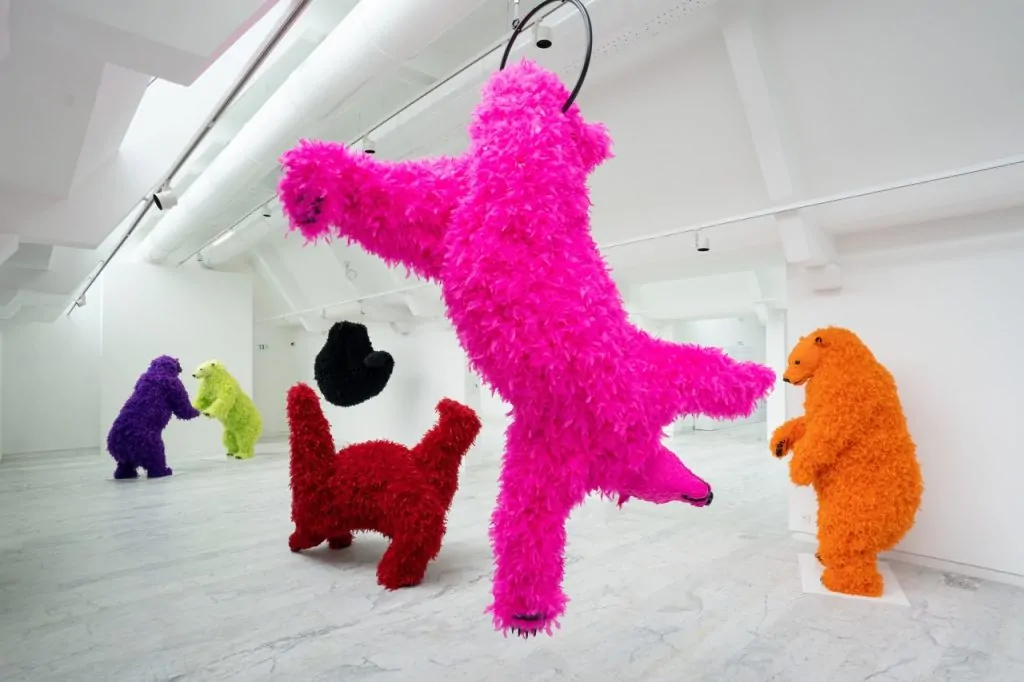
Exhibition view, ‘It’s not my job, it’s your job’ 2023, [mac] musée d’art contemporain de Marseille
Urethane foam, plastic, feathers
variable dimensions
Courtesy the Artist and Perrotin
© Paola Pivi
Photo: Hugo Glendinning
Your practice often relies on excess, of colour, of scale, of repetition. What role does abundance play in your work: generosity, provocation, or something more spiritual?
Paola Pivi: You’ve said it all. You know, I always thought that abundance and repetition represent humans, and so it’s definitely spiritual and physical, in the sense of physics, like the universe. And then, of course, it’s fun. And yes, there is generosity. There can be generosity. There can be provocation. There can be luxury. Sometimes, in the excess, there is a kind of luxury energy, and even just the fact of not stopping is a fun thing, just to repeat and repeat.
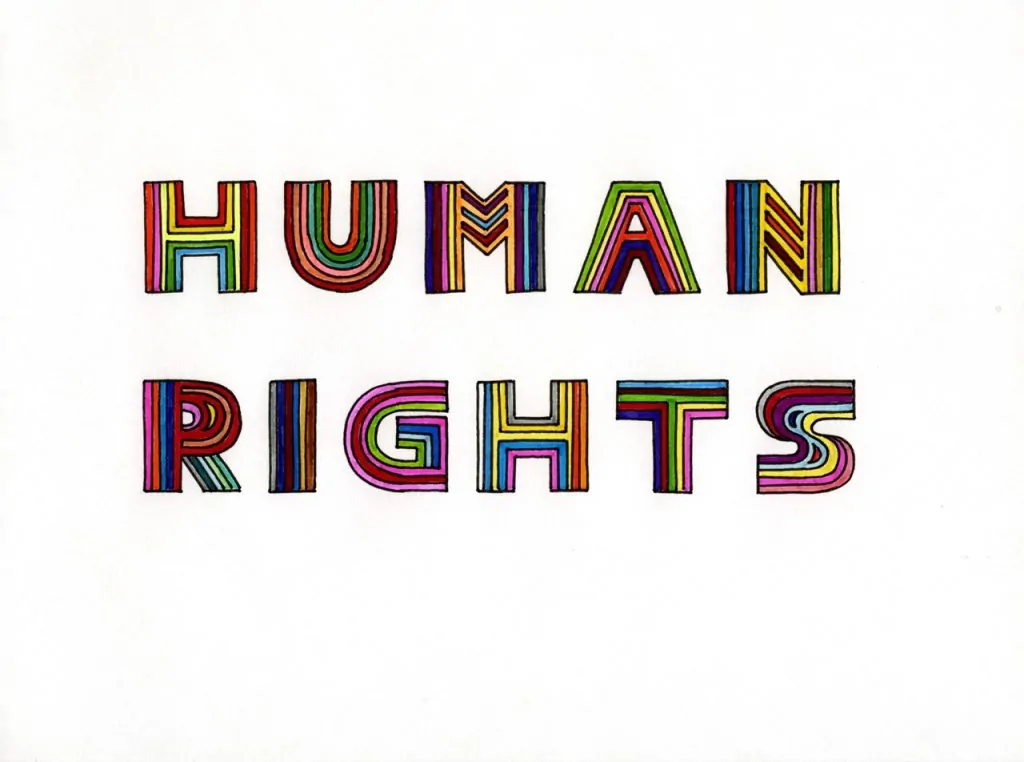
Human Rights 2010
felt-tip pen on paper, frame
27.9 x 21.6 cm
Unique #19063
Courtesy the Artist and Perrotin
© Paola Pivi
Do you think of play as a method, a medium, or an ethic in your practice?
Paola Pivi: No, I think play is connected with life, and so my practice is strongly connected with life, and therefore is strongly connected with play.
Your life has been strikingly nomadic, from Alicudi to Alaska. How does moving through different ecologies and cultures affect the forms and materials you choose?
Paola Pivi: Well, yes, ecologist cultures, lands, pieces of the planet completely affect my body, my mind, my life, my curiosity, my interests, my relationships, my affections for the people I meet, and therefore also my thinking, my ideas, my forms, and my materials. It’s all one. You know, it’s been said that my art is like a geographical elaboration of these travels.
In this case, the artwork, the one on the ceiling, on the roof of AGWA, is directly connected to my last home, which is in Hawaii. And all that multitude of colours and light could only come to form from living in Hawaii, because living there, I don’t know if you’ve ever visited, you really feel as if you’re on a different planet.
Or rather, not a different planet, but the motherly womb of the planet. It’s extremely powerful; it’s mind-blowing to live in Hawaii. Not in the sense that I think everyone should live there, but in the sense that it truly is what it is. I don’t know how to express it; I don’t even think I could live there for long, because it’s almost too strong.
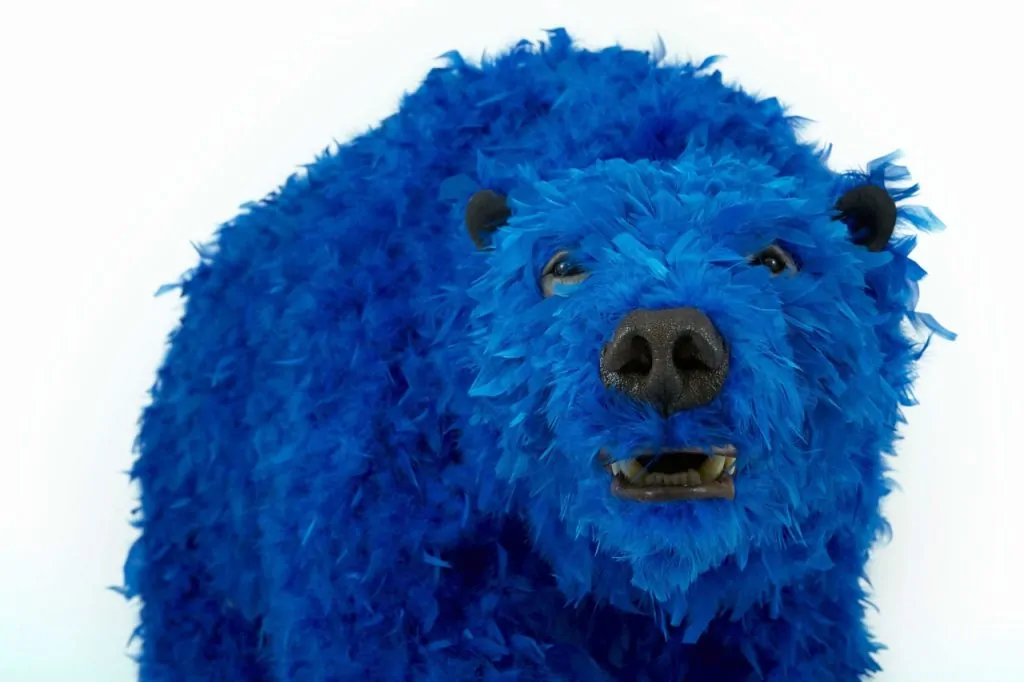
It’s not fair 2013
urethane foam, plastic, feathers
248 × 60 × 114 cm
Courtesy the Artist and Perrotin
© Paola Pivi
Photo: Guillaulme Ziccarelli
Living in Alaska, surrounded by actual bears, how has proximity to the animal reshaped the way you imagine or stage them in your work?
Paola Pivi: Oh, well, that was direct. Alaska is animals’ land; we humans are just intruding, truly. I felt that. I feel it every minute of my life in Alaska, which is still my main home, my main place in the world. I’m from Italy, but Alaska is my home.
When I’m there, I need four cameras around my house because this is bears’ land. I’m just a guest. The proximity to the animal is my fear every minute of my life there, and therefore it has completely influenced my work with them. It’s pervading. It’s terrifying. There are stories. Everybody speaks about them. They’re the landlords. There are always anecdotes involving a close brush with death. It makes death part of daily life.
Your work often disarms with immediacy, children laugh at the bears, adults marvel at the scale. How do you think about making art that speaks across generations and demographics without diluting complexity?
Paola Pivi: I don’t. I only think about making art. Some art, you know, speaks more easily and to more people, and some art is drier or needs a certain set of knowledge to really be understood. It was not my conscious choice to make art in this way. You’re right, it can easily speak across generations, but I feel that every art can speak across generations and demographics.
Only sometimes, maybe, some art happens to need a bit of knowledge. Or even when people stand in front of a white Reinhardt painting and say, “Oh, so what? I could do it too.” Even then, unconsciously, they are registering the art of Reinhardt. That’s exactly what, you know, in a way, is one of its purposes, right? So I think all art is for everyone.
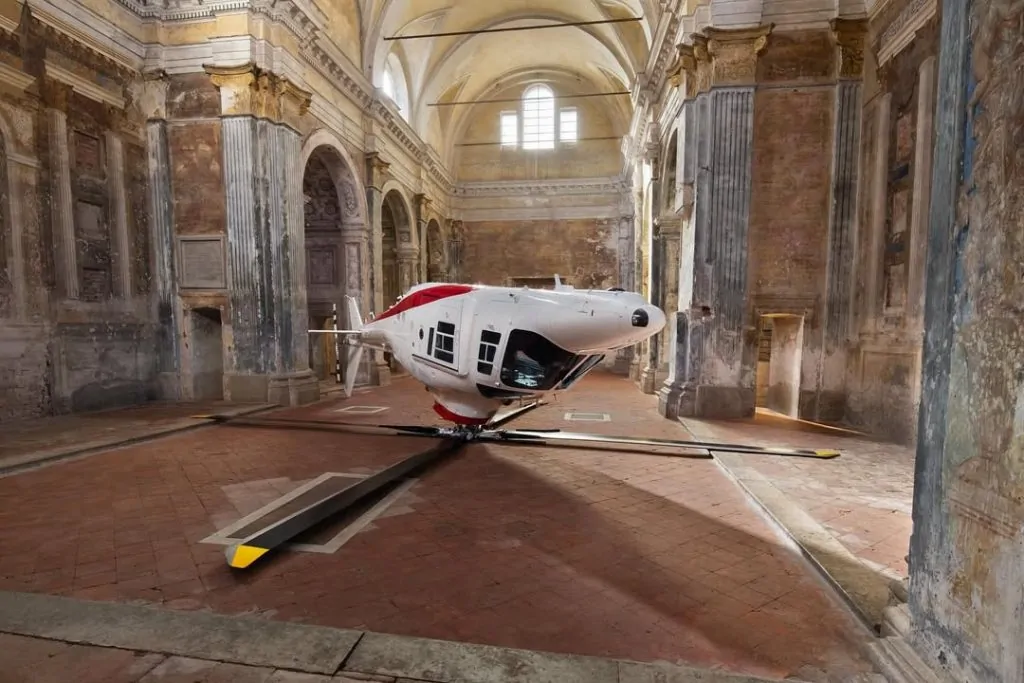
Courtesy of the artist
Your art resists neat political or environmental labels, yet audiences often project those concerns onto the work. How do you reconcile your own refusal of labels with the cultural urgency people find in your installations?
Paola Pivi: The answer is very easy. I refuse labels because I want the audience, or people in general, to be free. I want them to surprise me with a better capacity than I have, to think, elaborate, perceive, process, and inform me. I want my fellow human beings to be extraordinary and to improve my life.
Therefore, if I am the one who has to tell them what to think about my art, I would be, you know, boycotting the whole process. That’s why I don’t want labels, not because I reject one label or another, or any meaning they see in my art, or something my art makes them think about, A or B. That’s totally welcome. I would never say, “It’s A, it’s not B.” That’s totally welcome. I just refuse to say, “Oh, twenty people saw B, so it’s B.” No, because I’m waiting for A, B, C through to Z and more, and then the whole Arabic alphabet, and beyond that.
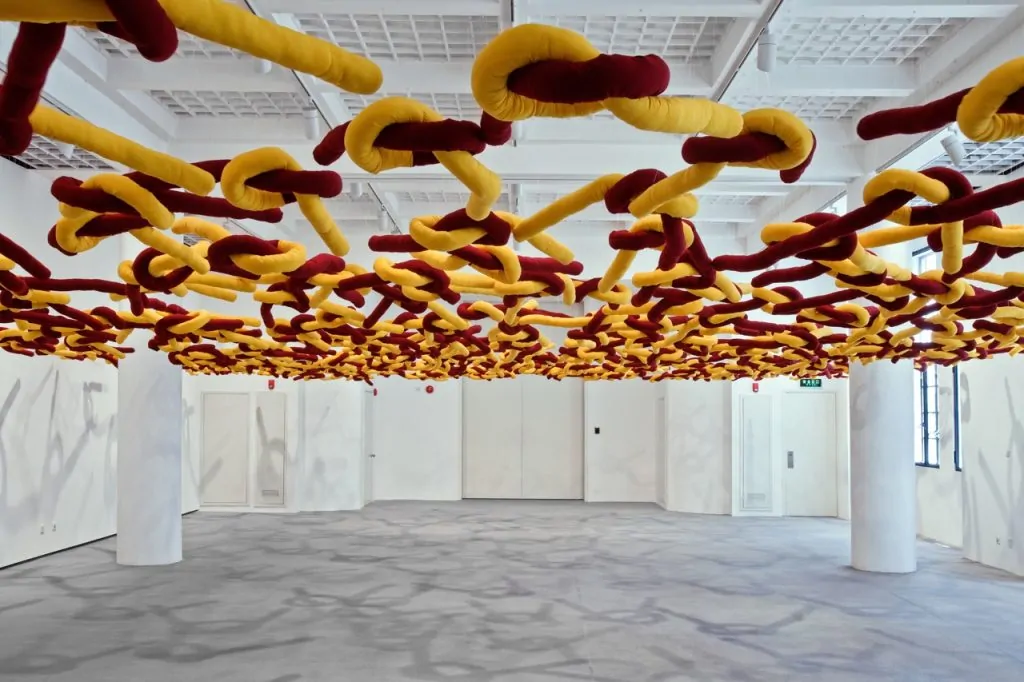
Share, but it’s not fair 2012
cotton fabric and polyester filling
variable dimensions
Installation view, “Share, But It’s Not Fair” at Rockbund Art Museum, Shanghai, 2012
Courtesy the Artist and Perrotin
© Paola Pivi
Photo: Thomas Fuesser
Ultimately, what does it mean to you when people say, “I don’t like it, I love it,” and how do you want that emotional excess to carry forward beyond the gallery walls?
Paola Pivi: Alright, so I Don’t Like It, I Love It is a title created by my husband, Karma Culture Brother, who is a composer and songwriter. He makes these amazing titles that I grab and put into my art. That title is like a door, a portal, to invite people to come to my show and have exactly that kind of democratic, equal approach that we spoke about before. And also this contradiction: I don’t like it is negative, but then I love it turns it into the biggest positive ever. This coming and going basically sets the tone for what people can do when they go to a show.
They can go and feel I don’t like it, I love it, and change their minds a hundred times over. It’s disorienting because it’s so true and so free, and it just tells them: come and be yourself, come as you are, and leave as you are. So this was the perfect title for this show. What it means to me is exactly this elaboration of our own perception and freedom to feel what we want to feel. For some people, it might even stop at I don’t like it — and that’s included too. My wish is that, yes, I am extremely selfish, so I would love for every other human being to improve themselves in terms of perceiving, understanding, and improving the world, relationships, and everything that we are doing together.
That, in turn, overlaps onto me. I would like them to experience art — my art and the art of others — and to have that effect upon themselves, which, you know, everybody who loves art knows is possible. It can change the way people think. Because if you understand differently, you can change the way you think, and then you can change your actions in the world.
©2025 Paola Pivi


